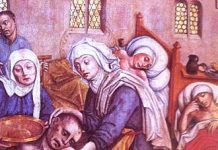‘Tis the ides of March[1], when one is meant to beware, for it marks the assassination of Julius Caesar, a famous enough event in itself, which changed Roman, and therefore world, history, made more famous by the Bard’s play. Et tu, Brute? Were the last words that Shakespeare gave the dying consul-dictator – it is difficult to know what to call Julius upon his death, the Senate had bestowed so many honours upon him. His patronymic would go down in history as synonymous with absolute power, with Kaiser and Tsar derivations thereof. Yet this fascinating article in First Things claims the Julius may well have said ‘And you, my child’, for there was a rumour that Brutus was his own son, or, perhaps, ‘See you in hell, punk’, which I somehow doubt, and I would hesitate to offer the Latin.
Caesar was a great man, gifted in many realms, his Gallic Wars masterpieces of military prowess, and his own recounting of them, referring to himself in the third person, historical detail and nearly perfectly structured Latin; hence, their value as pedagogical tools for schoolboys through the ages, until our own, with Latin in neglect. But Caesar too shuffled off this mortal coil like the rest of us will, murdered this day by multiple stab wounds, hence the superstitious fear of the ‘Ides’, a pagan belief which Christ has now conquered. If Caesar is considered in some ways a kind of martyr, it is not clear for what he died.
But we do know why the real martyrs died, two of them around the time of the Ides in 1649, put to the torture in odium fidei, in hatred of the faith, on the part of their tormentors, and, in their own hearts, for the love of God and his people. We here at the College depart on our annual pilgrimage to Martyrs’ Shrine, when we leave the comfort of home behind, and travel in the steps of two of real martyrs, who knew precisely why they were being put to death, Saints Jean de Brebueuf and Gabriel Lalemant. It was the day after the Ides – the 16th – that Brebuef, after horrific tortures under which he held up stoically, nay, rather silently and prayerfully, his heart was cut out of his chest, and devoured, in some hope that his pagan, superstitious persecutors would imbibe some small part of this man’s unheard-of courage. Saint Gabriel Lalemant survived until the next morning– even though more frail than de Brebeuf- suffering his own nigh-indescribable Calvary, before a hatchet through his skull sent him to eternal bliss.
Trudging through the snow, to the sites of their capture, then their martyrdom, brings the whole body, soul, mind and spirit into prayer, which is what a pilgrimage should be all about. We end the day with an outdoor Mass on the site around the time Brebeuf’s noble soul went to heaven, and we will be sure to bring the intentions of our readers and supporters along.
[1] The Romans did not number days of a month from the first to the last day. Instead, they counted back from three fixed points of the month: the Nones (5th or 7th, depending on the length of the month), the Ides (13th or 15th), and theKalends (1st of the following month). The Ides occurred near the midpoint, on the 13th for most months, but on the 15th for March, May, July, and October. The Ides were supposed to be determined by the full moon, reflecting the lunar origin of the Roman calendar. On the earliest calendar, the Ides of March would have been the first full moon of the new year.










